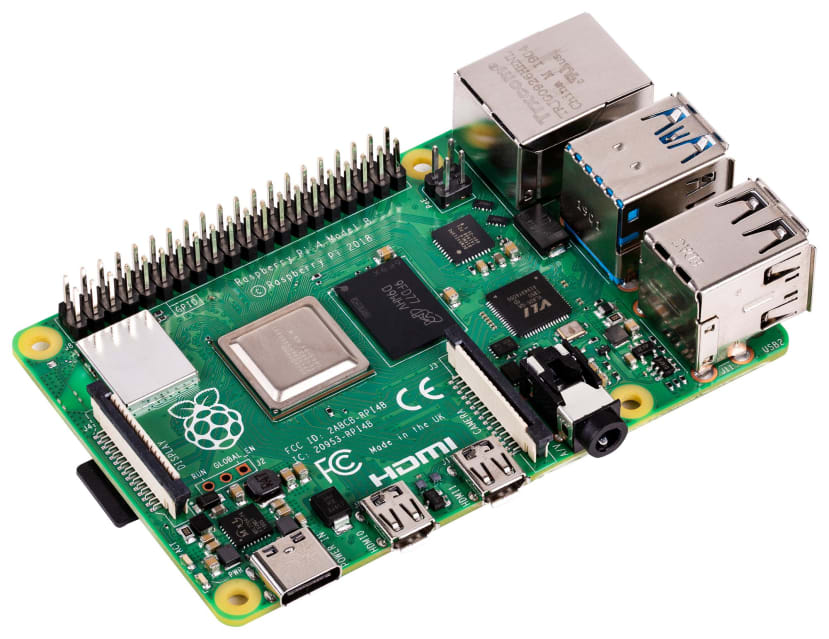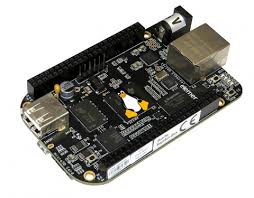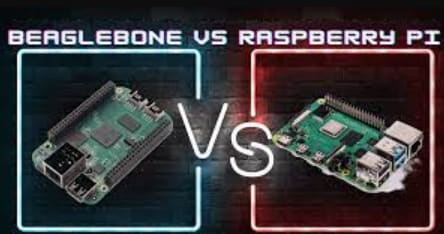Raspberry Pi vs BeagleBone Modules
Follow articleHow do you feel about this article? Help us to provide better content for you.
Thank you! Your feedback has been received.
There was a problem submitting your feedback, please try again later.
What do you think of this article?
Raspberry Pi and BeagleBone are two famous single-board computers that professionals and hobbyists use. These modules provide a flexible and cost-effective platform for various uses, including media centres, home automation, and robotics.
Whether you are interested in building a DIY project, teaching programming skills, or developing an industrial application, understanding the differences between these boards is essential to determine which suits your specific needs. In this article, I will compare Raspberry Pi 4 (182-2098) with BeagleBone (125-2411) and explore the advantages and limitations of each module.
Raspberry Pi 4 (182-2098)
The Raspberry Pi 4 is the latest Raspberry Pi model of the popular single-board computer, and it was unveiled in June 2019. It has a quad-core, 64-bit ARM Cortex-A72 processor with a maximum clock speed of 1.5GHz and comes with 2GB, 4GB, or 8GB of LPDDR4 RAM.
The module contains two USB 3.0 and two USB 2.0 ports and supports dual-band 802.11ac WiFi, Bluetooth 5.0, and Gigabit Ethernet. The Raspberry Pi 4 is an excellent platform for media centre applications because it supports twin 4K display output. In addition, the Raspberry Pi 4's form factor is comparable to that of its forerunners, making a range of Raspberry Pi accessories compatible with it.
Features of Raspberry Pi 4
- The Raspberry Pi 4 is a substantial upgrade over its predecessors thanks to its quad-core ARM Cortex-A72 1.5GHz CPU.
- The Raspberry Pi 4 has plenty of RAM for even the most memory-intensive programs, thanks to its choice of 1GB, 2GB, 4GB, or 8GB of LPDDR4 RAM.
- The Raspberry Pi 4 is a potent platform for multimedia applications because it can support dual 4K monitors at roughly 60 frames per second.
- The Raspberry Pi 4 has dual-band 802.11ac wireless networking, Bluetooth 5.0, Gigabit Ethernet, and USB 3.0 ports for quick data transfer.
- The 40 GPIO pins of the Raspberry Pi 4 can connect to various electronic devices and sensors.
- The Raspberry Pi 4 is compatible with different software, including its namesake operating system, Ubuntu, and other Linux distributions.
- Due to its similar compact shape to other generations, the Raspberry Pi 4 can use existing cases and accessories for the platform.
Advantages of Raspberry Pi 4
- The Raspberry Pi 4 is an inexpensive platform, with the 2GB model costing as little as $35. Because of this, it is a desirable choice for schools and enthusiasts with few resources.
- The Raspberry Pi 4 is readily accessible, with many distributors and dealers worldwide. It guarantees that the module is simple to use and can be sent instantly to any place.
- A sizable and vibrant community of users, programmers, and enthusiasts promotes the Raspberry Pi platform by offering tutorials, support, and resources. As a result, beginners may get started more easily, and seasoned users can locate issues' answers more easily.
- A wide range of add-ons, add-on software, and accessories are available for the Raspberry Pi. It makes it easy to increase the module's functionality and discover software solutions for different applications.
Limitations of Raspberry Pi 4
- The Raspberry Pi 4 may be less suitable for applications that need precise timing or control because it needs to be optimized for real-time computing.
- The Raspberry Pi 4 may not be as dependable as other platforms and is not intended for mission-critical applications.
- The Raspberry Pi 4's GPIO pins are less accessible than other platforms, making connecting to external gear more challenging.
BeagleBone (125-2411)
BeagleBone is a single-board computer series created by Texas Instruments. BeagleBone Black, the most recent version, was introduced in 2013 and has a 1GHz ARM Cortex-A8 processor and 512MB of DDR3 RAM. In addition, the module includes 92 GPIO pins that are programmable and support USB 2.0 and 10/100 Ethernet. For real-time processing, the BeagleBone Black contains an integrated microprocessor, and it can run Linux and Android, among other operating systems.
Features of BeagleBone Modules
- BeagleBone boards have ARM processors with clock speeds between 1 and 1.5 GHz, such as the AM3358, AM3359, and Sitara AM5728.
- The DDR3 RAM on BeagleBone boards is typically 512MB or 1GB, which can be increased with extra memory modules.
- BeagleBone boards include USB and HDMI connections for connecting peripherals and displays and Ethernet ports for wired network connectivity.
- BeagleBone boards come with several expansion possibilities, such as general-purpose input/output (GPIO) pins, analog input/output, and support for "capes" (expansion boards).
- BeagleBone boards are compatible with many Linux distributions, including Debian and Ubuntu.
- Although BeagleBone boards usually are slightly bigger than Raspberry Pi models, they are still sufficiently small to fit within small cases.
Advantages of BeagleBone
- The BeagleBone Black is well-suited for applications requiring precise timing or control thanks to its onboard microcontroller's real-time processing optimizations.
- The BeagleBone Black can be tailored to the needs of individual users thanks to its adaptable design. It is the perfect platform for experimentation and prototyping because of this.
- The BeagleBone Black is a community-supported platform for which the source code and hardware specifications are publicly available. Using this, users may work together and develop new ideas more easily.
Limitations of BeagleBone
- The BeagleBone Black is more expensive than the Raspberry Pi 4. Due to this, it might be less affordable for hobbyists and teachers on a low budget.
- Because there is a smaller BeagleBone community than there is for the Raspberry Pi, it may take more work to obtain materials and assistance for the platform.
- It can be more challenging to obtain compatible hardware and software solutions for the BeagleBone due to the smaller size of the BeagleBone ecosystem than that of the Raspberry Pi.
Comparison between Raspberry Pi 4 and BeagleBone
When comparing the Raspberry Pi 4 and BeagleBone, there are several factors to consider:
- The BeagleBone Black contains an onboard microcontroller for real-time computing, but the Raspberry Pi 4 has a more potent processor and more RAM.
- Because it is less expensive than the BeagleBone Black, the Raspberry Pi 4 is more readily available to educators and enthusiasts.
- When compared to the BeagleBone, the Raspberry Pi has a larger and more vibrant user community, which can make it simpler to locate platform resources and support.
- Compared to the BeagleBone, the Raspberry Pi features a bigger ecosystem of software and accessories.
- Applications that call for exact timing or control are better suited for the BeagleBone Black because it is geared for real-time processing.
- Compared to the Raspberry Pi 4, the BeagleBone Black offers a more adaptable architecture that enables customers to tailor the system to their unique requirements.
- The Raspberry Pi 4 IoT board might not be as dependable for mission-critical applications as the BeagleBone Black.
- Compared to the Raspberry Pi 4, the BeagleBone Black has more readily available GPIO pins, making it simpler to connect to other electronics.
Which One to Choose?
There are several things to consider while deciding between the Raspberry Pi 4 and the BeagleBone Black. The Raspberry Pi 4 is a wonderful option for hobbyists and educators on a small budget that requires a simple platform and a huge community of support. It features a big ecosystem of add-ons and software options, is widely accessible, and is reasonably priced. The BeagleBone Black, however, might be a better option for applications that need real-time processing, accurate timing or control, or a more adaptable architecture. Real-time processing optimization, a more adaptable architecture, and open-source status enable increased creativity and collaboration.
Conclusion
The Raspberry Pi and BeagleBone modules are two popular and powerful single-board computers that can be used for various projects. Both offer a variety of features and capabilities, including GPIO pins, Wi-Fi and Bluetooth connectivity, and support for multiple programming languages.
While the Raspberry Pi is more commonly used for general-purpose computing, media centers, and Internet of Things (IoT) projects, the BeagleBone is better suited for industrial and embedded applications that require real-time processing and control. Additionally, the BeagleBone has the advantage of being more customizable and modular, with various expansion boards and capes available to enhance its functionality.




Comments